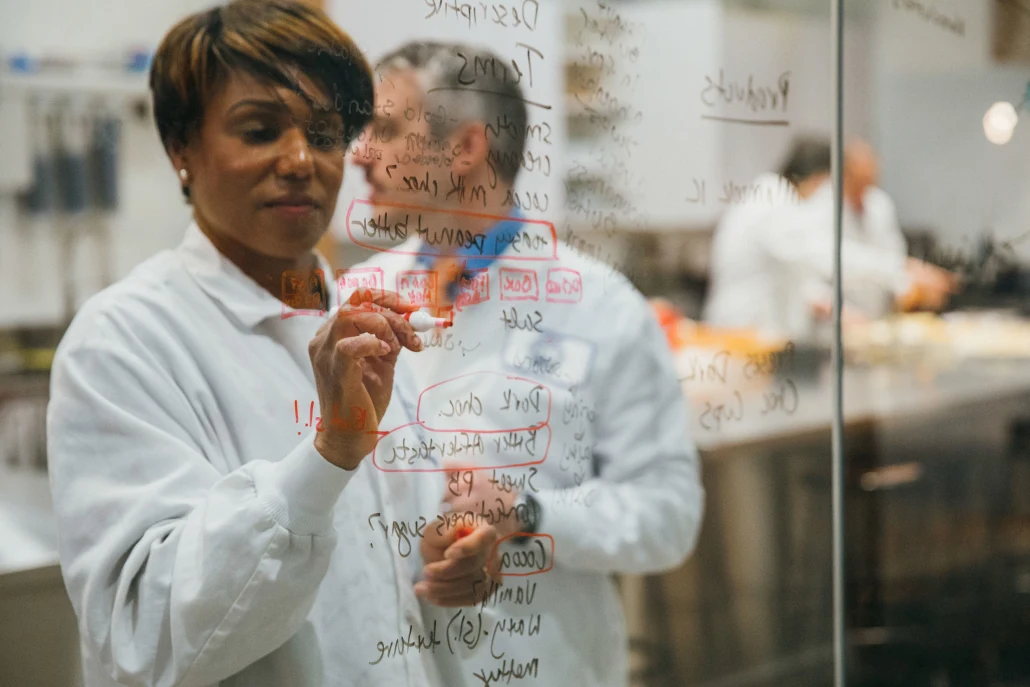
News
Calf Care Done Right

Before the best Tillamook dairy products make it to your table, you’ve got to have the best milk. Before that, you’ve got to have the healthiest, comfiest cows. And before them, you need the healthiest calves. It’s just that matter of fact.
Calf care is one of the most important things our farmers must tend to in a day. “The farm is like a big circle. If you don’t take care of one part of it, then it breaks that circle…” said calf expert Taryn Martin.
We’ve introduced you to Taryn in the past. She’s the Tillamook farmer who’s impressively revolutionized the calf care program on her family’s farm. So we’re bringing her back, to teach us a thing or two about calf care, done the right way.
Although calves are small, it takes nearly a village of cow pros, and a multifaceted, meticulous process to keep them in tip-top shape. At the end of the day, there’s always a well-intentioned reason behind everything our farmers do, and it’s always for the health and comfort of their animals, whether young or grown.
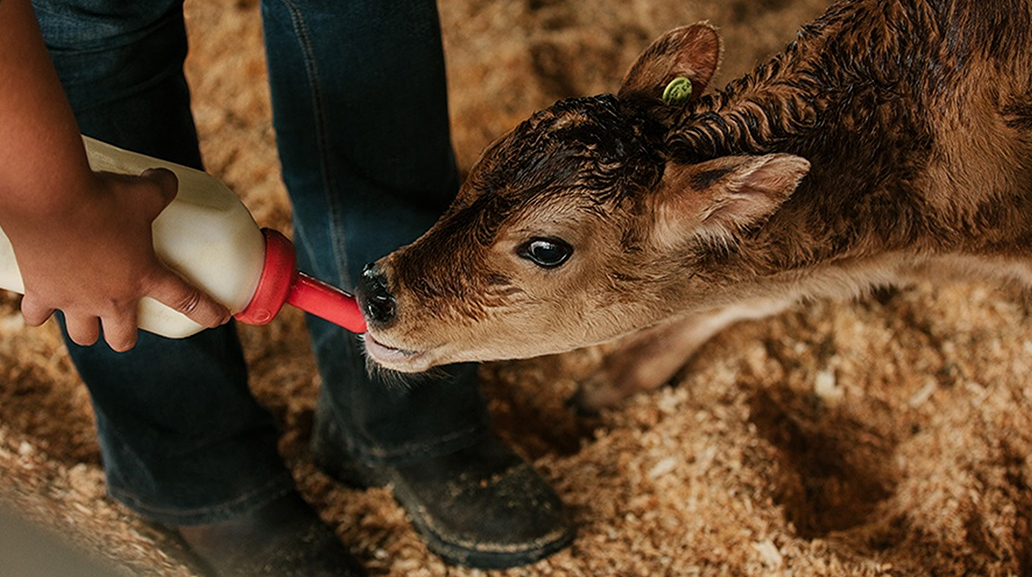
Taryn Martin feeds a newborn calf its first bottle of the highest quality colostrum, packed with nutrients.
A cow has a calf. What happens then? A bunch of things. Firstly, Taryn mixes a vaccine and immediately feeds it to the newborn. Administering the medicine on time, within the first couple hours of birth, is crucial to keeping each calf healthy. “Just like human babies, these calves are really fragile,” she said.
Next, Taryn diligently watches the clock to ensure every calf receives two bottles of colostrum, within the first 24 hours of life. “Colostrum is the cow’s first milk,” she explained. “The colostrum is essential to overall health and building the calves’ immune systems.”
The farm is like a big circle. If you don’t take care of one part of it, then it breaks that circle.
Cows and calves stay together for 24-48 hours. Once the calf has received its immunizations, colostrum, and all necessary health treatments, each calf is given his or her own personal hutch.
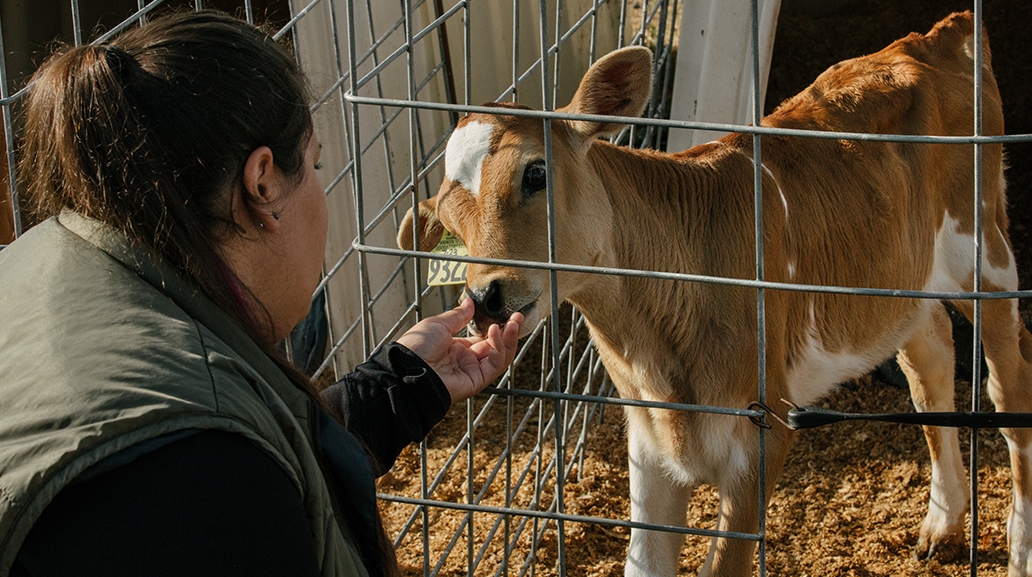
Taryn closely watches each calf to ensure it’s latching onto its bottle and maintaining a healthy eating schedule.
Keep in mind, there are many different ways to house a calf. And each farmer chooses the best approach for their individual herd and management system. On the Martin Farm, Taryn uses personal hutches, for a number of reasons.
Firstly, “you’ve got the danger of calves being stepped on”. Another reason: keeping calves in a hutch allows farmers to ensure the calves are receiving the proper nutrition. “If they were drinking naturally from the udder, you’d have no idea how much or how little they’d be drinking, until a problem were to escalate – possibly to a place of no return,” said Taryn.
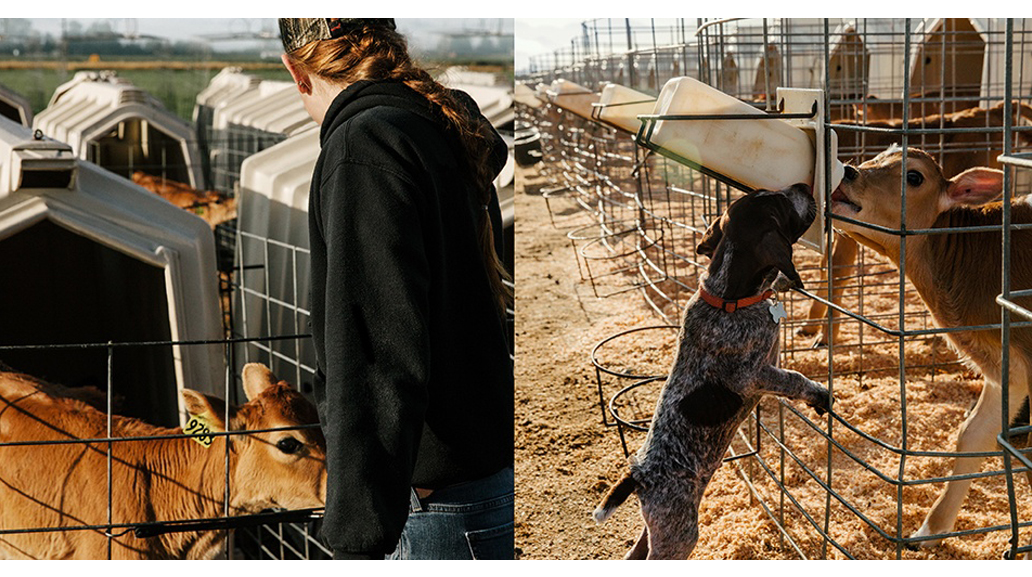
At Martin Dairy, Taryn’s hired a dedicated team to help her run the calf care program around the clock. “If you don’t have team players, you’re not going to have a good running farm,” she said.
The calves are neighbors, but live separately before eventually being moved into group pens at 3 ½ months of age. And akin to every other part of Taryn’s calf care program, there are numerous, key reasons for this design.
For example, if the calves were together, they’d be able to lick one another, which would allow pathogens to enter their bodies; this, in turn, would put their immune systems at risk.
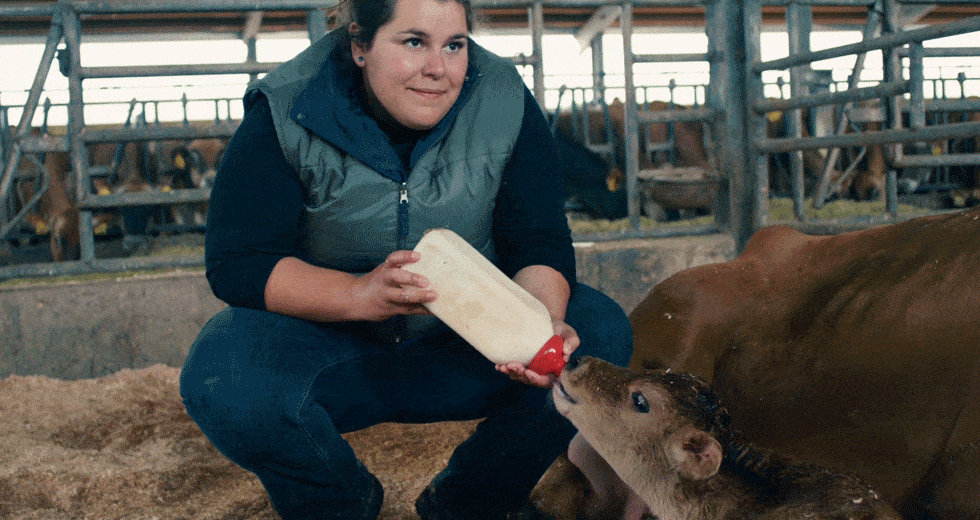
“This kind of life is super rewarding,” said Taryn Martin. “A lot of people don’t know everything you have to do to get calves to become cows.”
After hours of jogging to keep up with Taryn, as she explained calf care in a way that made us wonder if she’s earned a medical degree in animal medicine (impressively, she hasn’t), we asked her to further elaborate on the Martin family’s calf care program, and the ways it’s connected to the Tillamook Co-op.
“It’s exciting because this is the most advanced our family’s program has been since 1995...We’re really lucky to have a lot of resources that Tillamook provides. We also have a lot of people who are really passionate in our industry, come by and check and make sure that everything is going...great for the babies.”
Making sure the calves are taken care of allows the farm to keep going on.”
Taryn ended by bringing it all full circle. “I want to carry on the family name. The only way you can do that and move it to the new generation, is if you make sure you have a stable foundation... With this calf program, that’s probably the slogan…Making sure the calves are taken care of allows the farm to keep going on.”
Learn more about our commitment to Healthful Cows here.
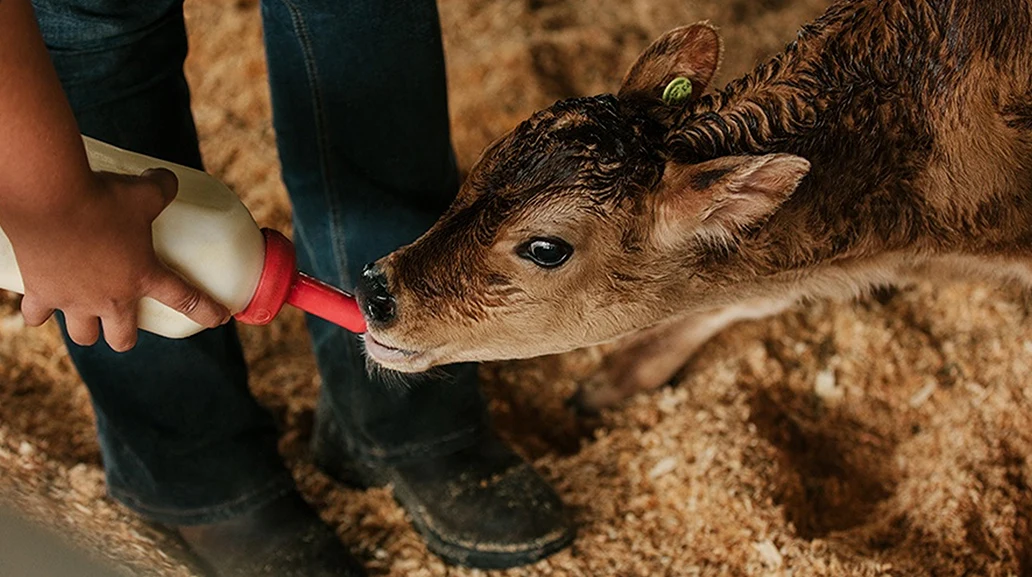
Taryn Martin feeds a newborn calf its first bottle of the highest quality colostrum, packed with nutrients.
A cow has a calf. What happens then? A bunch of things. Firstly, Taryn mixes a vaccine and immediately feeds it to the newborn. Administering the medicine on time, within the first couple hours of birth, is crucial to keeping each calf healthy. “Just like human babies, these calves are really fragile,” she said.
Next, Taryn diligently watches the clock to ensure every calf receives two bottles of colostrum, within the first 24 hours of life. “Colostrum is the cow’s first milk,” she explained. “The colostrum is essential to overall health and building the calves’ immune systems.”
The farm is like a big circle. If you don’t take care of one part of it, then it breaks that circle.
Cows and calves stay together for 24-48 hours. Once the calf has received its immunizations, colostrum, and all necessary health treatments, each calf is given his or her own personal hutch.
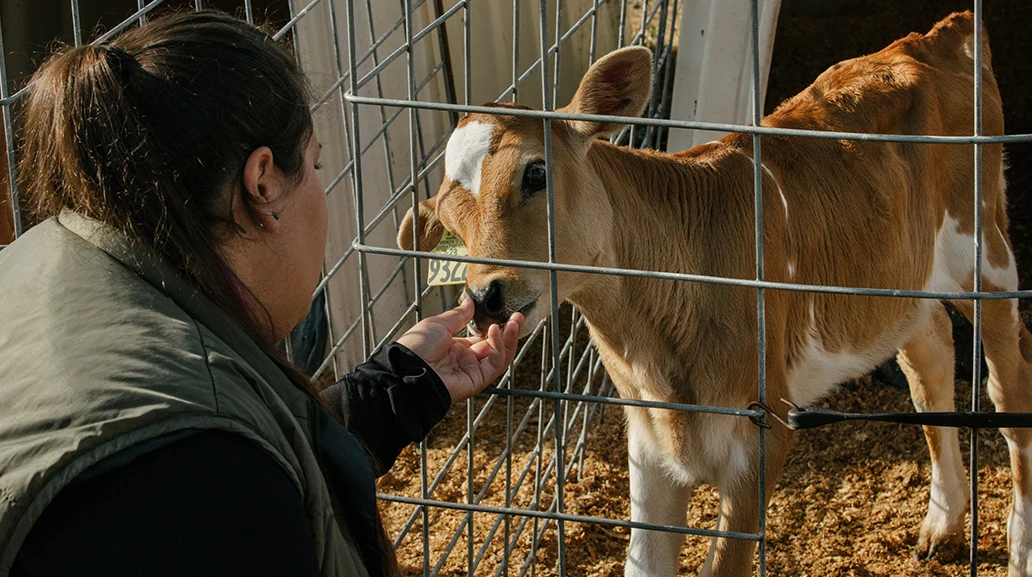
Taryn closely watches each calf to ensure it’s latching onto its bottle and maintaining a healthy eating schedule.
Keep in mind, there are many different ways to house a calf. And each farmer chooses the best approach for their individual herd and management system. On the Martin Farm, Taryn uses personal hutches, for a number of reasons.
Firstly, “you’ve got the danger of calves being stepped on”. Another reason: keeping calves in a hutch allows farmers to ensure the calves are receiving the proper nutrition. “If they were drinking naturally from the udder, you’d have no idea how much or how little they’d be drinking, until a problem were to escalate – possibly to a place of no return,” said Taryn.
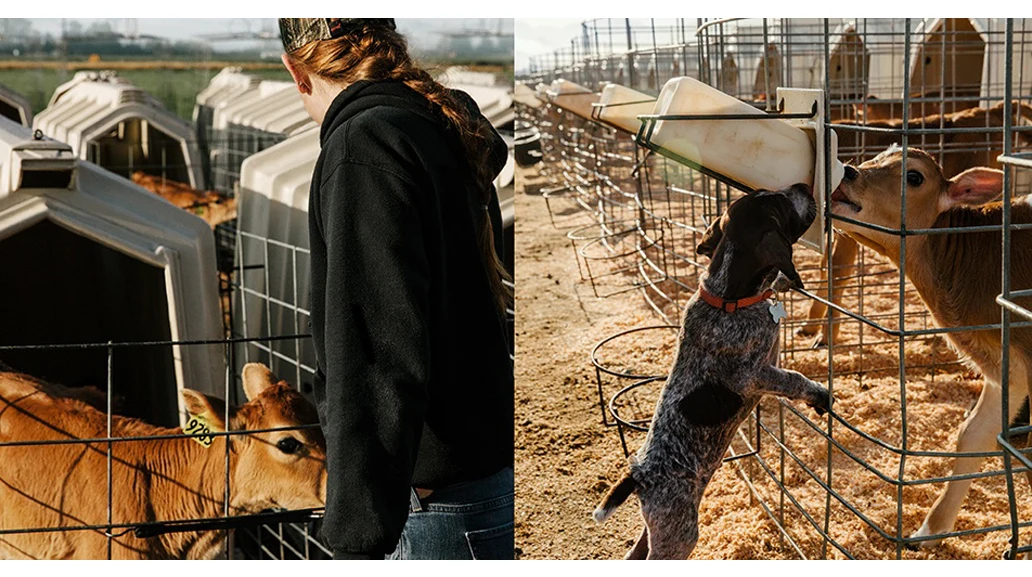
At Martin Dairy, Taryn’s hired a dedicated team to help her run the calf care program around the clock. “If you don’t have team players, you’re not going to have a good running farm,” she said.
The calves are neighbors, but live separately before eventually being moved into group pens at 3 ½ months of age. And akin to every other part of Taryn’s calf care program, there are numerous, key reasons for this design.
For example, if the calves were together, they’d be able to lick one another, which would allow pathogens to enter their bodies; this, in turn, would put their immune systems at risk.
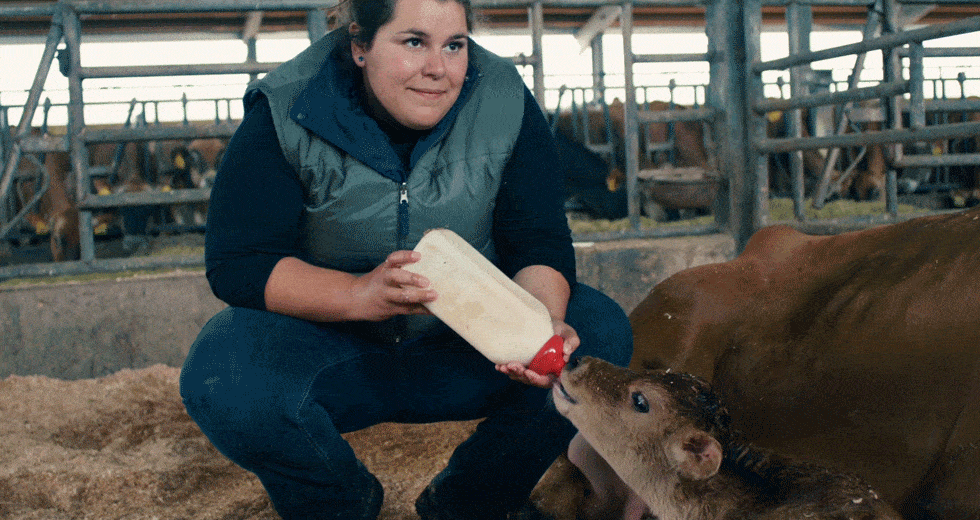
“This kind of life is super rewarding,” said Taryn Martin. “A lot of people don’t know everything you have to do to get calves to become cows.”
After hours of jogging to keep up with Taryn, as she explained calf care in a way that made us wonder if she’s earned a medical degree in animal medicine (impressively, she hasn’t), we asked her to further elaborate on the Martin family’s calf care program, and the ways it’s connected to the Tillamook Co-op.
“It’s exciting because this is the most advanced our family’s program has been since 1995...We’re really lucky to have a lot of resources that Tillamook provides. We also have a lot of people who are really passionate in our industry, come by and check and make sure that everything is going...great for the babies.”
Making sure the calves are taken care of allows the farm to keep going on.”
Taryn ended by bringing it all full circle. “I want to carry on the family name. The only way you can do that and move it to the new generation, is if you make sure you have a stable foundation... With this calf program, that’s probably the slogan…Making sure the calves are taken care of allows the farm to keep going on.”
Learn more about our commitment to Healthful Cows here.
